Back
How To Empower & What Every Builder Must Know
Events
By HackQuest
Apr 26,20254 min read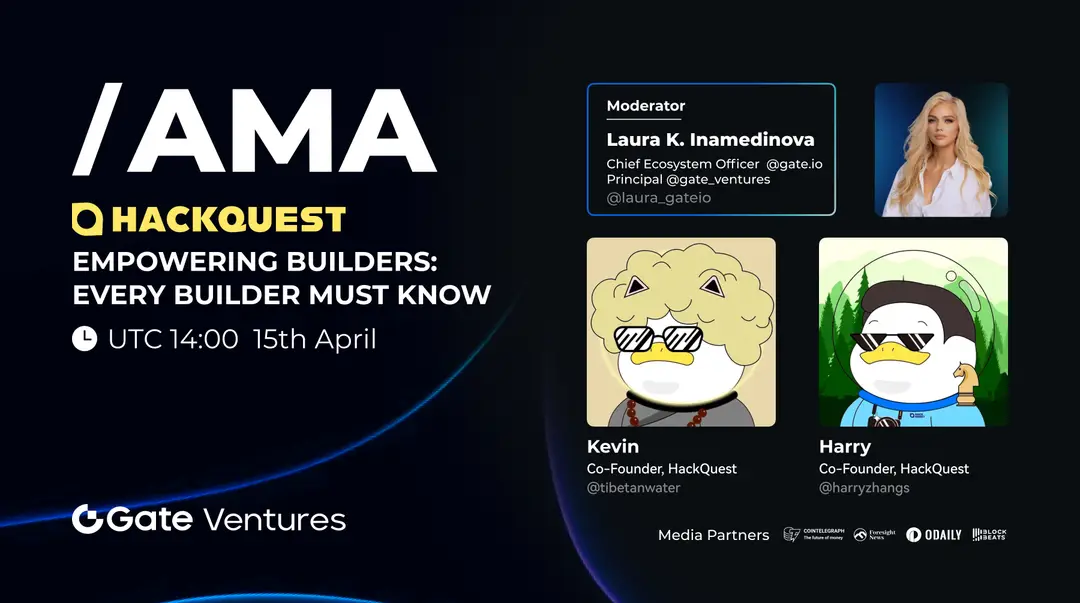
In a Twitter Space hosted by Gate Ventures, HackQuest co-founders Harry and Kevin joined Chief Ecosystem Officer Laura K. to discuss how developers can leverage hackathons to launch successful Web3 startups. The conversation revealed how hackathons have evolved from simple coding competitions to legitimate launchpads for startups, with HackQuest alone helping over 100 projects raise more than $200 million in venture funding.
The HackQuest founders shared their journey of building a comprehensive platform that serves as "the gateway to Web3 development," offering educational content co-authored with 25 different blockchain ecosystems, regular hackathons, ambassador programs, and accelerators. With a team of nearly 40 people across eight countries, many of whom are founders of local developer communities, HackQuest has created a zero-to-one pathway for developers entering the Web3 space.
The discussion highlighted three critical qualities that predict early-stage team success: exceptional founding teams who can pivot when necessary, adaptability and persistence through market cycles, and strong founder-market fit where teams have unique expertise in their specific niche. The speakers emphasized that most projects don't fail because of competition but because founders quit before achieving traction, noting that successful startups often pivot six or seven times before finding their path.
Common mistakes new developers make include building without understanding user needs, failing to establish an initial base of loyal users, and becoming too attached to ideas without rapid market testing. The panelists stressed that in Web3, speed to market often matters more than perfection, and the inability to secure external funding early on might be a warning sign about a project's viability.
For hackathon success, the speakers revealed that judges typically spend only 3-5 minutes reviewing each submission, making polished UI/UX and unique, niche solutions critical differentiators. Projects that simply fork existing repositories or build standard applications rarely make the shortlist. For securing funding, they advised starting small (even with friends and family), building MVPs that demonstrate traction, and understanding market cycles to time fundraising efforts strategically.
The conversation concluded with an inspiring story about a founder who, after being rejected by multiple companies and failing in several hackathons, persisted for three years before winning a competition, securing a spot in Y Combinator, raising millions in funding, and eventually becoming a partner at a prominent Silicon Valley VC firm. This exemplified the speakers' core message: in Web3 building, persistence through rejection is often the defining characteristic of eventual success.
Key Takeaway
●Team Quality Over Project Idea: The single biggest predictor of startup success is the founding team's quality, adaptability, and persistence, not necessarily the initial problem or solution. Successful Web3 teams can pivot multiple times while maintaining their core vision and relationships.
●Zero-to-One Developer Pathway: HackQuest's comprehensive approach combines educational content, community building, hackathons, and accelerator programs to create a complete journey for developers entering Web3, with specialized tracks for different blockchain languages (Solidity, Rust, Move).
●Founder-Market Fit Matters: Beyond product-market fit, successful Web3 projects demonstrate strong founder-market fit, where the team's unique background and expertise give them a competitive advantage in their specific niche, whether it's cross-border payments, construction smart contracts, or educational platforms.
●Market Validation Before Perfect Product: Many developers make the critical mistake of building in isolation without user feedback. Successful teams rapidly test ideas, talk to potential users early, and aren't afraid to pivot based on market signals rather than becoming too attached to their original vision.
●UI/UX as Competitive Advantage: In hackathons where judges may only spend 3-5 minutes reviewing each submission, polished user interfaces and experiences become crucial differentiators, often outweighing technical complexity in initial evaluations and helping projects stand out among thousands of submissions.
●Ecosystem Alignment Strategy: Working closely with blockchain foundations provides early-stage projects with reduced development overhead, better market understanding, and access to funding, PR, and user growth support - making it an ideal starting point for first-time founders.
●Persistence Through Rejection: The journey from rejection to success often takes years of continuous effort. One highlighted founder went from being rejected by every YC company to becoming a YC founder and VC partner after three years of persistent building and multiple hackathon attempts.
Introduction
Laura: Hello everyone! I'm Laura K. Inamedinova, Chief Ecosystem Officer at gate.io and Principal at Gate Ventures. Today we're talking about how builders can go from learning about Web3 to launching real-world projects. Hackathons aren't just about prizes anymore - they're a legitimate way to secure funding, build teams, and turn ideas into startups. That's actually how I first entered the startup space back in 2014, through a hackathon.
Joining me for this discussion are Kevin and Harry, two co-founders of HackQuest. They have helped over 100 projects raise more than $200 million in venture funding and are here to share how developers can use hackathons to launch the next big Web3 startup.
Kevin: My name is Kevin. My partners Harry, Cameron, and I have been working in the tech space for more than seven years. We built our first peer-to-peer English EdTech platform back in 2017, which got acquired in 2021. Since then, we started thinking about what to build next.
We started a founders community called Moonshot Commons where we hosted many hackathons. Surprisingly, 30% of all hackathon participants were building in Web3, which really surprised us. So we decided to build a developer education and hackathon platform called HackQuest. We officially launched our platform in December 2023, so it has been about a year and a half.
Harry: Kevin covered most of the story. I'd like to also give a shout out to our team. We have almost 40 people now globally across eight different countries, all coming from developer, DevRel, and community backgrounds.
Many of them are founders themselves of local developer communities and hackathon hosts. For example, Karthikeyan on the call is the founder of Hack Sapiens, one of the largest hackathons in the Jaipur, Delhi, Northern India region. We also have Manish, founder of Hack for Bengal, one of East India's largest hackathons, now in their fifth year. Wycliffe has helped onboard over 20,000 developers, and John leads our Nigeria region, growing a local community to hundreds from zero.
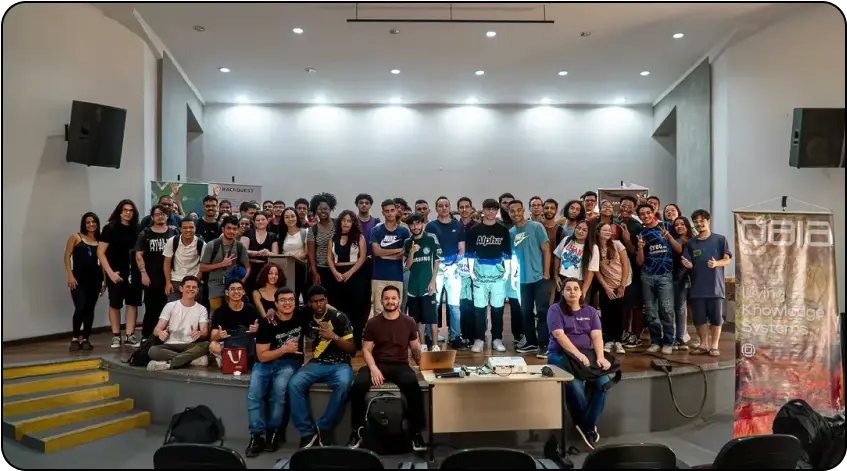
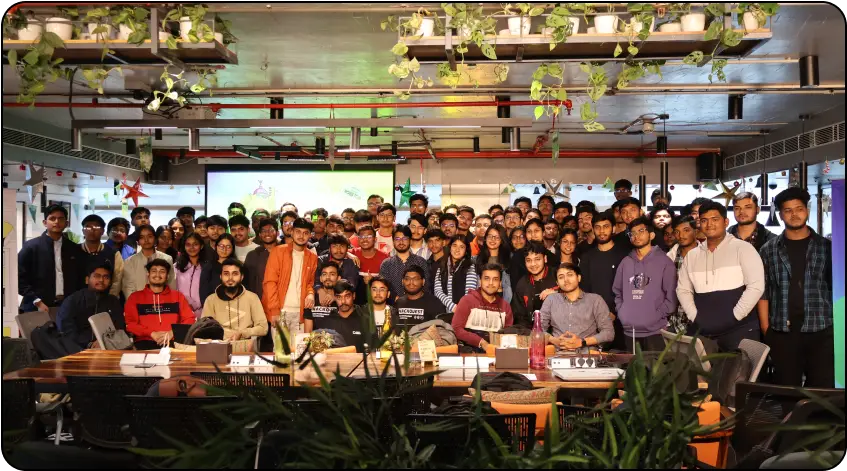
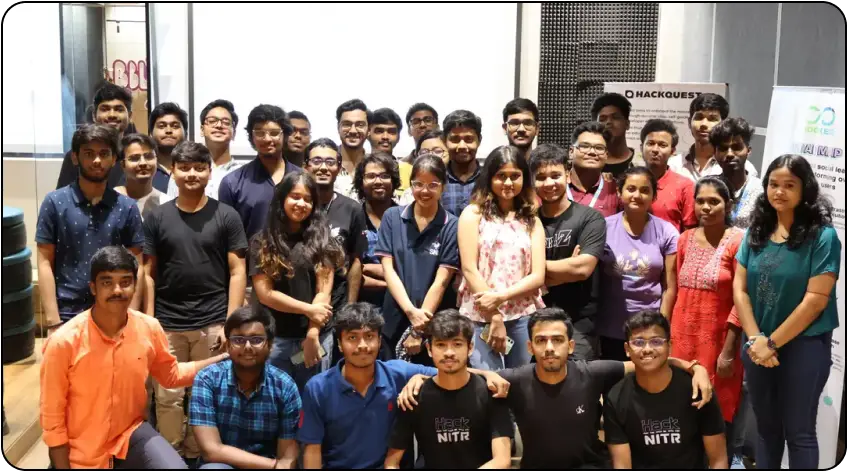
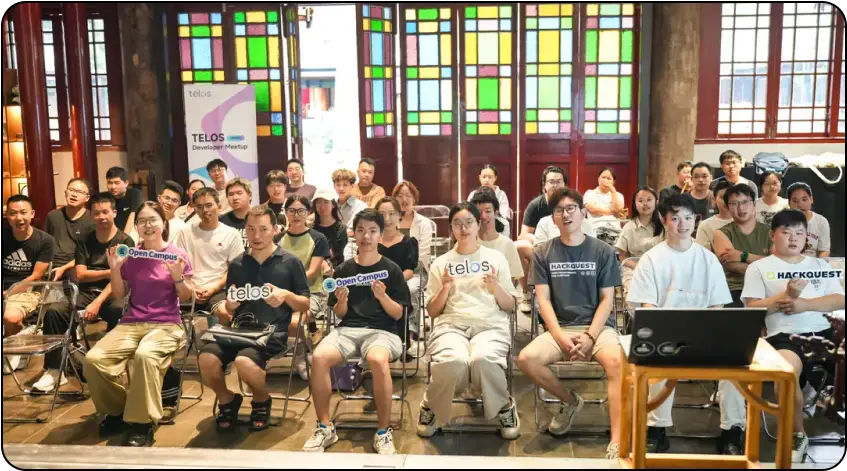
🔥
What unites us is the passion for education and the firm belief in developers. We believe builders and technical founders are the driving force in any space, but especially crypto, because we simply lack enough developers and builders who are long-term driven to problem solve. When that changes, crypto mass adoption can truly be achieved.
What Makes HackQuest Different?
Kevin: We want to build a zero-to-one path for developers and founders. Our tagline is "the gateway to Web3 development world." We have all the resources developers need in their journey of building in Web3.
We work with 25 different ecosystems and have co-authored educational content in self-guided learning tracks that guide developers from zero to one. We have content for Rust developers, Solidity developers, and Move developers. If you go to Solana, Sui, or Xion's official sites, you'll find our educational content featured on their official websites.
After developers learn, they can join our community or various ambassador programs. For example, we run the Arbitrum Ambassador Program and the XION Ambassador Program. We also have a hackathon platform where we host hackathons every month, so developers can always find hackathons to join and build.
Finally, we have founders programs. If developers want to continue building their projects after a hackathon, they can join our accelerators. We have three accelerators ongoing right now - one with Vara, one with Solana, and one with Mantle.
Top Qualities of Successful Early-Stage Teams
Harry: Betting on people is similar to early-stage investing. Hackathons follow very similar steps - you try to identify the best people and talents.
💡
One thing I learned from my experience at an early-stage accelerator is to bet on the people, not necessarily just the problem they're trying to solve or the solution they're providing.
Good teams and founders can pivot. As they say in Silicon Valley, a successful startup pivots at least six or seven times on average. We've seen many teams turn around from being very close to dead. In crypto, every month makes a huge difference, and good teams are the main driver. So identifying the team behind a project is probably the single biggest predictor of success.
💡
The second quality is adaptability or persistence.
Most projects don't die because of competitors, but because founders quit before the project has a chance to take off. Especially in the developer education space, we've seen so many projects die within a year or two because they never continued or waited for better times, or they refused to pivot. Being adaptable in bull and bear markets, playing along with narratives while maintaining conviction to continue building, shipping, and improving is crucial. If you keep building, nobody can say you've failed yet.
💡
The third quality is problem-solution alignment and founder-market fit.
Everyone talks about product-market fit, but to get there, these other steps are important. What type of background does your team have? What's your unique advantage that makes your team undoubtedly number one or at least in the top three to five in your space?
Our team has been together for almost a decade, which is why we're able to persist through disagreements and keep building. We share a passion for education, which has bonded us through thick and thin. We see this in other successful teams that have deep expertise in a particular niche.
Kevin: I agree with Harry. The most important characteristic is to just keep building. For the first two years, we didn't really figure things out. We made many mistakes and experienced turbulence. But once you pass that two-year mark, surprisingly everything comes together, and you figure things out. The key is to keep building, iterate as fast as you can, and try to figure things out.
Common Mistakes New Developers Make
Kevin:
⚠️
The biggest mistake is not understanding the market and not building for users.
Sometimes developers join an education-themed hackathon but don't think about what end users really need. Instead, they randomly combine blockchain and education to create an interesting idea that isn't useful for end users. Such projects aren't sustainable because after the hackathon, developers find there's no real market.
Developers often focus on building their product without talking to users or establishing an initial user base of 100 loyal fans. Before building any product, it's important to talk to users and feel the market sentiment. We talk to investors not for fundraising but to understand markets, and we talk to many users. It's important to listen from multiple perspectives to understand what's happening in the market.
Harry:
📢
I'd add that it's important to listen to the market, not just your own heart.
Having commitment and firm belief in your project is important, but so is rapid testing, knowing when to pivot, and not being too attached. The classic "mom test" is super important in crypto.
The cost of capital in crypto is significantly lower compared to other spaces, and there are many opportunities to tackle. Richard from Huma Finance recently mentioned that he couldn't believe how many opportunities exist in payments, one of the most competitive and validated use cases in DeFi, and how few competitors there are. In Web2, every mini-niche has competition, but in crypto, there are many ideas in every ecosystem that haven't been built yet.
⚠️
Being too attached to your idea and feeling like you need a perfect product before testing it in the market is a common fallacy.
In crypto, speed to market is often more important than perfection.
⚠️
Another mistake is putting too much of your own money into your startup.
While it sounds impressive when a team puts all their savings into their startup, it might also indicate they can't convince VCs or angel investors to write checks, which is poor signaling. If an idea doesn't get enough buy-in after 6-12 months of validation, testing, and discovery, it might be time to reconsider.
Being able to sell your idea is crucial. If a founder can't sell their project to users, investors, or partners, it's probably not worth investing their life savings into it.
What Helps Projects Win Hackathons and Secure Funding?
Harry: First, many projects face auto-disqualification if they aren't deployed on the right chain or at all, if they don't have open-source GitHub repositories, or if they lack key functions or a functional UI/UX.
💥
For projects that pass these basic requirements, UI/UX design is crucial.
Judges, especially high-caliber ones like founders and CEOs of top protocols, might only spend 3-5 minutes reviewing each project. In a recent hackathon with over 1,000 submissions, it took hours just to filter out lower-quality projects.
💥
The core contract being interesting and niche is also important.
Experienced judges have seen thousands of projects, so building the same thing won't impress them. You won't make the shortlist by building a standard DEX, using a smart contract library, forking a repo, making front-end changes, and adding a few features.
💥
Having a unique thesis helps you stand out.
We've seen projects tokenizing biomarkers, creating smart contracts as a service for the construction sector, and focusing on cross-border payments for underserved markets like Africa or LATAM, specifically for small and medium-sized businesses. These corridors have huge volume but lack infrastructure both on and off-chain.
Kevin: For our first project, we didn't get any funding initially. We found a market with real needs and started with zero money. We put in a couple thousand dollars of our own because we were very young and it was hard to convince people to invest. Eventually, we found the right market and generated enough revenue to keep the company running for four years before it was acquired.
In our second year, investors reached out asking if we needed funding, but we realized we didn't need it because we weren't building a scalable startup but more of a business, so we rejected the investment.
For HackQuest, we started by raising $200,000 from family and friends. After building for a year, developing our MVP, and becoming somewhat known in the hackathon space, we reached out to hackathon judges and VCs we worked with. That's when we successfully raised our first round of venture funding.
Once you have your first investor willing to bet on you, everything becomes easier. Our first investor helped us onboard five more investors and continued investing in subsequent rounds. It's important to find people who trust you.
There will be people who say discouraging things. Try to understand if their feedback makes sense, and if it doesn't, just keep talking to people. We got rejected a lot, but there are always people who will trust you.
💥
Understanding market cycles is also crucial.
When the market is hot, it's easier to raise funds. We raised in 2021 when the market was very good and closed our fundraising within two weeks. When we raised last year during a tougher market, it took a couple of months.
New Features and Updates at HackQuest
Harry: We're always building and shipping new features every two to three weeks. Our website traffic over the last three months has exceeded the past 12 months combined and surpassed most competitors in the space with consistent global traffic.
One of our priorities is the analytics side - using hackathon events, community, education, and founders programs as early predictors and analysis tools for identifying amazing teams and founders. We've always firmly believed in the builder narrative. For builders to be successful, the world needs to appreciate and value them.
In the DeFi space, we have TVL and other metrics. We're developing an equivalent for builder activity - a way to horizontally compare ecosystems in terms of builder innovation, activity, and shipping, and to identify and track individual builders' long-term growth.
We're also building on-chain community management tools for different blockchain ecosystems, allowing teams to track and manage everything instead of using an Airtable spreadsheet.
We're continuously onboarding new ecosystems and will soon announce a partnership with a very popular ecosystem, including events, learning tracks, and IRL activities in three different countries. We're expanding our geographical reach by working with partners in new markets.
If you're a long-term builder who doesn't give up, has a good team, and is adaptable, we want to talk to you. Our team is now big enough to connect with all the long-term builders in the world. DM us on Twitter, and we'll try to get in touch and help you on your journey, whether it's launching on Binance or just ideating together.
Success Stories and Lessons
Kevin:
💡
The biggest takeaway from successful builders is to work closely with foundations.
Different ecosystems have different needs, and working with foundations helps founders reduce repetitive work. The ecosystems know what they need and where users are, and they can provide fundraising support, PR support, and user growth support to early-stage projects.
If you don't have startup experience, working closely with a foundation is a good starting point for your entrepreneurial journey. Always focus on finding real users - we've seen projects that raised a lot of money but had no real users or use cases, and they eventually went bankrupt.
Ensuring you have enough runway is also important because crypto has strong bull and bear market cycles. If you don't have enough cash for the bear market, you'll die before the bull market returns. Raise enough money and control your burn rate so your team has enough cash to survive the bear market.
Harry: I'd like to share a personal story about a founder I'll call "L." L cold DMed me back in 2018 when I was interning at a cross-border VC. He was interested in the VC space and wanted advice on becoming an investor.
I suggested he check out job boards at YC, Techstars, and other accelerators - advice I still give to younger people starting in entrepreneurship. L applied to about 10 jobs but wasn't accepted anywhere. He decided to start his own company but failed for about two years.
The next time I chatted with him was at one of our Moonshot hackathons in 2021-22. He failed again, but they kept trying. Finally, in 2022, they won after three attempts. Two months later, they got into Y Combinator's winter cohort.
It took L three years to go from being rejected by every YC company to becoming a YC founder and raising millions. Now he's a partner at a well-known Silicon Valley VC, still trying different things and exploring different paths.
💡
The lesson is grit and tenacity.
Just getting started is probably the single biggest differentiator between top performers and average ones. Everyone listening is already above average by taking steps to learn, but 99% of people won't take action with the tools available.
It feels like the 1990s, the golden age of building, because there are so many tools, resources, people, and capital that can help you be successful or at least test your ideas. The biggest differentiator is whether you take that step or not. So take that step, be tenacious, have grit, and don't be afraid of failure.
Laura: With that inspirational take, that's where we need to end. You couldn't have given better advice - just keep building and hustling. One "no" gets you closer to a "yes." There's a popular saying: if you knew you needed 100 "no's" to get to a "yes," how fast would you collect those "no's"? That's the thesis I live by myself - keep building, keep talking to people. Even if it's a "no," it's just one more "no" that gets you closer to a "yes."
Thank you, Harry and Kevin, for an insightful conversation. I've learned a lot and I'm excited to see what's next for HackQuest.